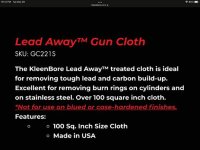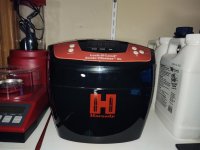For the tail of the bolt, where all the carbon builds up, I cut a patch of a coarse Scotch Bright pad about 1 to 1 1/2 inches square. I saturate the Scotch Bright pad with the solvent and then I wrap the Scotch Bright patch around the bolt tail where the carbon has accumulated and hold the patch in place with my left fingers. Then using the fingers of my right hand, I rotate/spin the bolt while applying pressure to the Scotch Bright pad and the bolt's tail.
This method has worked very well for years for removing the hard stuck on carbon that the bolt tail cleaning tools always leave behind. Eventually you will slowly polish the bolt's tail with the Scotch Bright pad and that just makes cleaning even easier.



